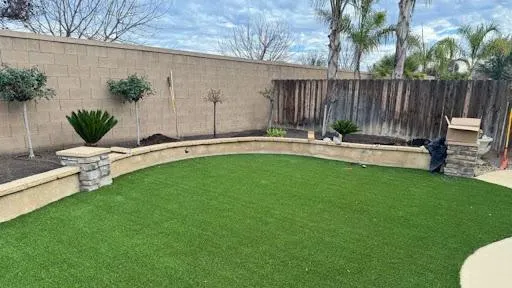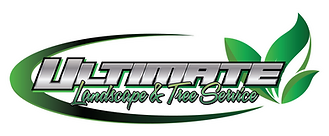BLOGS

How to Plan a Landscaping Design for Low-Water Usage?
For a low-water usage landscaping design, choose drought-resistant and native plants, apply mulch to conserve moisture, use efficient irrigation methods like drip systems, and include water-saving features such as rain gardens and permeable surfaces.
Creating a beautiful landscape while conserving water is more achievable than ever with the right planning and strategies. In regions with limited water resources, designing a low-water usage landscape not only helps in maintaining a sustainable environment but also ensures your garden remains vibrant and functional throughout the year. By implementing thoughtful plant selections, efficient irrigation techniques, and incorporating smart design features, you can achieve a lush, low-maintenance garden that aligns with water conservation goals.
Ultimate Landscape & Tree Service, California's premier landscaping company, offers expert advice and services to help you create such a landscape. With our extensive experience and dedication to quality, we are here to guide you through every step of designing a water-efficient garden.
Key Takeaways
Plant Selection: Choose drought-tolerant and native plants.
Efficient Irrigation: Use smart irrigation systems and water wisely.
Landscape Design: Incorporate hardscaping, mulch, and shade.
Sustainable Practices: Limit turf areas and apply xeriscaping principles.
Drought-Tolerant Plants for Your Garden
Drought-tolerant plants are vital for creating a low-water usage landscape. These plants are specially adapted to survive in arid conditions and require minimal watering once established. They have evolved to conserve water through various mechanisms, making them perfect for areas with limited water resources. For example, succulents like agave and aloe have thick, fleshy leaves that store water, allowing them to endure prolonged dry periods. Ground covers such as creeping thyme and clover are also excellent choices as they help retain soil moisture, reduce evaporation, and suppress weed growth. Additionally, choosing native plants—species that naturally thrive in your local climate and soil conditions—further minimizes water needs and maintenance, as they are well-suited to their environment. Integrating these plants into your garden not only conserves water but also enhances the sustainability and beauty of your landscape.
Agave: Stores water in its thick leaves, making it highly drought-resistant.
Aloe: Another succulent that retains moisture well and thrives in dry conditions.
Creeping Thyme: A low-growing ground cover that helps reduce soil evaporation.
Clover: Provides ground cover that retains moisture and reduces weed growth.
Native Plants: Adapted to local conditions, requiring less water and maintenance.
Benefits of Smart Irrigation Systems
Smart irrigation systems revolutionize water conservation by using advanced technology to optimize watering practices. These systems are designed to adjust watering schedules based on real-time weather data, soil moisture levels, and other environmental factors. For instance, smart controllers can modify irrigation schedules automatically when rain is detected or when soil moisture reaches optimal levels. Drip irrigation, a crucial component of smart systems, delivers water directly to the plant roots through a network of tubes and emitters. This targeted approach minimizes water wastage due to evaporation and runoff. By implementing smart irrigation systems, you can significantly reduce water consumption, ensure that your plants receive the precise amount of moisture they need, and contribute to a more sustainable landscape. These systems offer an effective way to manage water resources efficiently while maintaining a healthy and vibrant garden.
Smart Controllers: Adjust watering schedules based on weather and soil moisture.
Drip Irrigation: Delivers water directly to plant roots, minimizing waste.
Sensors: Monitor environmental conditions to optimize watering practices.
Weather Integration: Modifies irrigation based on real-time weather data.
Water Savings: Reduces overall water consumption and promotes efficiency.
Incorporating Hardscaping into Your Design
Hardscaping involves incorporating non-plant elements into your landscape design to enhance both aesthetics and functionality. These elements include pathways, patios, retaining walls, and decorative stones, which not only add visual appeal but also reduce the areas that require regular watering. By using materials like flagstone, pavers, and gravel, you can create functional outdoor spaces that are both durable and low-maintenance. Hardscaping elements help manage water runoff by directing it away from sensitive plant areas and reducing soil erosion. Additionally, integrating hardscaping features allows you to decrease the overall amount of planting areas, which in turn reduces water needs and maintenance. This approach contributes to a more sustainable landscape by minimizing the dependency on irrigation and promoting efficient water usage.
Pathways: Create functional walkways that reduce the need for turf.
Patios: Provide versatile outdoor living spaces with minimal water requirements.
Retaining Walls: Manage soil erosion and direct water runoff effectively.
Decorative Stones: Enhance visual appeal while reducing planting areas.
Gravel: Low-maintenance ground cover that reduces watering needs.
The Role of Mulch in Water Conservation
Mulch is an essential component in maintaining soil moisture and reducing the frequency of watering in your garden. Organic mulches, such as wood chips, straw, and shredded leaves, form a protective layer over the soil surface. This layer helps retain moisture by reducing evaporation and shielding the soil from extreme temperature fluctuations. Mulch also serves to suppress weed growth, which can otherwise compete with plants for water and nutrients. By regulating soil temperature and providing a stable environment, mulch promotes healthier plant growth and reduces the need for frequent irrigation. Applying a layer of mulch around your garden beds is a simple yet effective strategy for conserving water and improving the overall health of your landscape.
Wood Chips: Durable mulch that retains moisture and suppresses weeds.
Straw: Lightweight mulch that conserves soil moisture and prevents erosion.
Shredded Leaves: Natural mulch that improves soil structure and water retention.
Organic Matter: Adds nutrients to the soil as it decomposes.
Temperature Regulation: Helps maintain a stable soil environment.
Xeriscaping Principles for a Water-Efficient Garden
Xeriscaping is a landscaping method designed to conserve water through thoughtful planning and design. The primary principles of xeriscaping include improving soil quality, selecting drought-resistant plants, and implementing efficient irrigation practices. This approach emphasizes reducing traditional lawn areas and replacing them with drought-tolerant ground covers, decorative gravel, or hardscaping elements. By incorporating features like rain barrels for water collection and using mulch to retain soil moisture, xeriscaping promotes sustainable water usage. The goal is to create a visually appealing landscape that thrives with minimal water input, ultimately contributing to environmental conservation and reducing your water footprint. Adopting xeriscaping principles can lead to a more resilient and low-maintenance garden that aligns with water conservation goals.
Soil Improvement: Enhance soil quality to retain moisture and support plant health.
Drought-Resistant Plants: Choose plants that require minimal water.
Efficient Irrigation: Use water-saving techniques and systems.
Reduced Lawn Areas: Replace traditional lawns with low-water alternatives.
Water Collection: Implement systems like rain barrels for efficient water use.
FAQs
1. What are drought-tolerant plants? Drought-tolerant plants are species that require minimal water once established. They are adapted to survive in dry conditions and include succulents, certain ground covers, and native plants.
2. How does smart irrigation work? Smart irrigation systems use technology to adjust watering schedules based on weather data and soil moisture levels, ensuring efficient water use and reducing waste.
3. What is the benefit of using mulch in landscaping? Mulch helps retain soil moisture, suppress weeds, and regulate soil temperature, which can reduce the need for frequent watering and improve plant health.
4. What is xeriscaping? Xeriscaping is a landscaping method designed to conserve water by using drought-resistant plants, efficient irrigation, and minimizing turf areas.
5. How can hardscaping reduce water usage? Hardscaping elements like pathways and patios reduce the amount of area that requires watering, helping to manage water resources more effectively.
Designing a Sustainable Landscape with Ultimate Landscape & Tree Service
Creating a landscaping design that conserves water doesn't mean sacrificing beauty or functionality. With Ultimate Landscape & Tree Service, California's premier landscaping company, you can achieve a stunning, low-water usage garden tailored to your needs.
Contact us now to schedule a consultation and start your journey toward a more sustainable and stunning garden. Don’t wait—reach out to us today and see how we can make your landscaping vision a reality!

Contact Us
Monday - Friday: 9am - 5pm
Saturday: Closed
Sunday: Closed
Connect With Us
Financing Available
© 2025 Ultimate Landscape & Tree Service LLC. All Rights Reserved. Privacy Policy. Terms & Conditions. Web Design By Fused Media.
